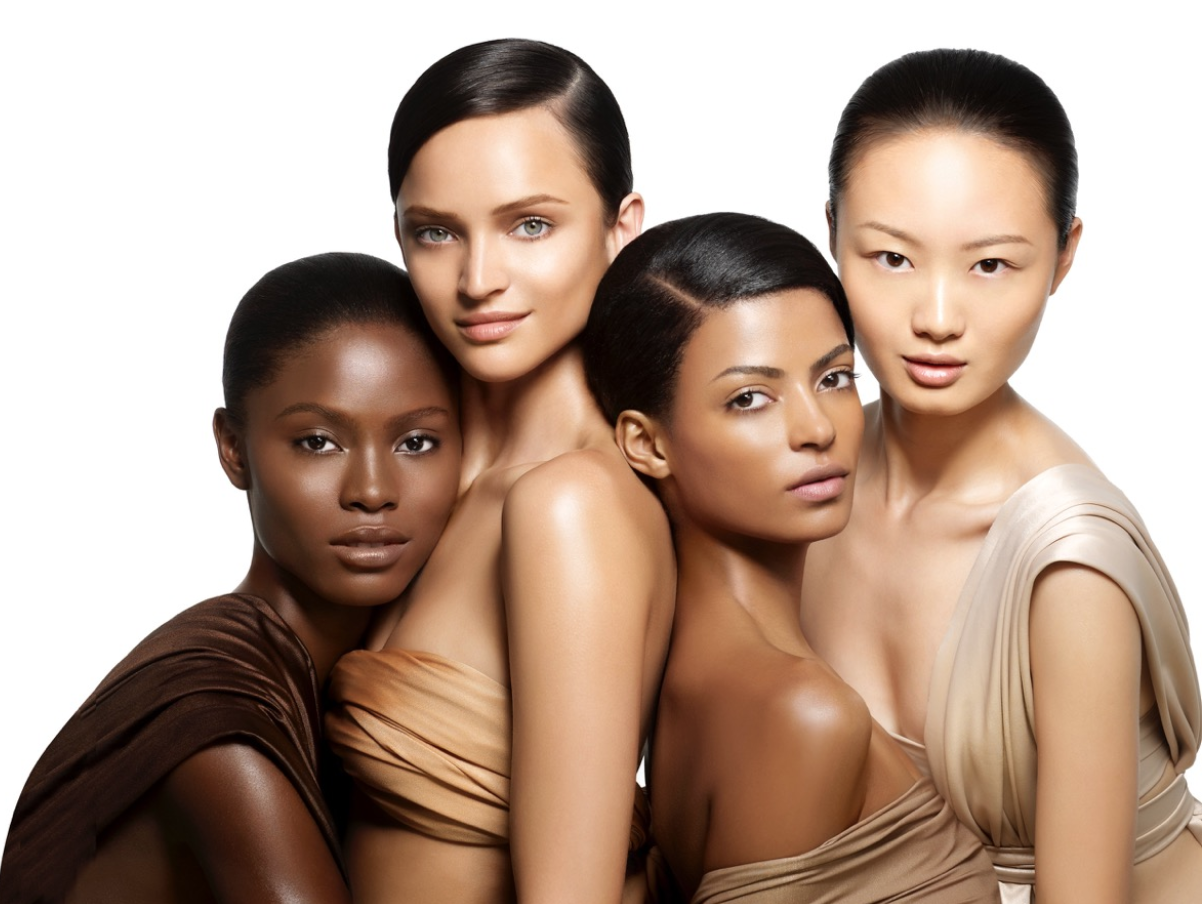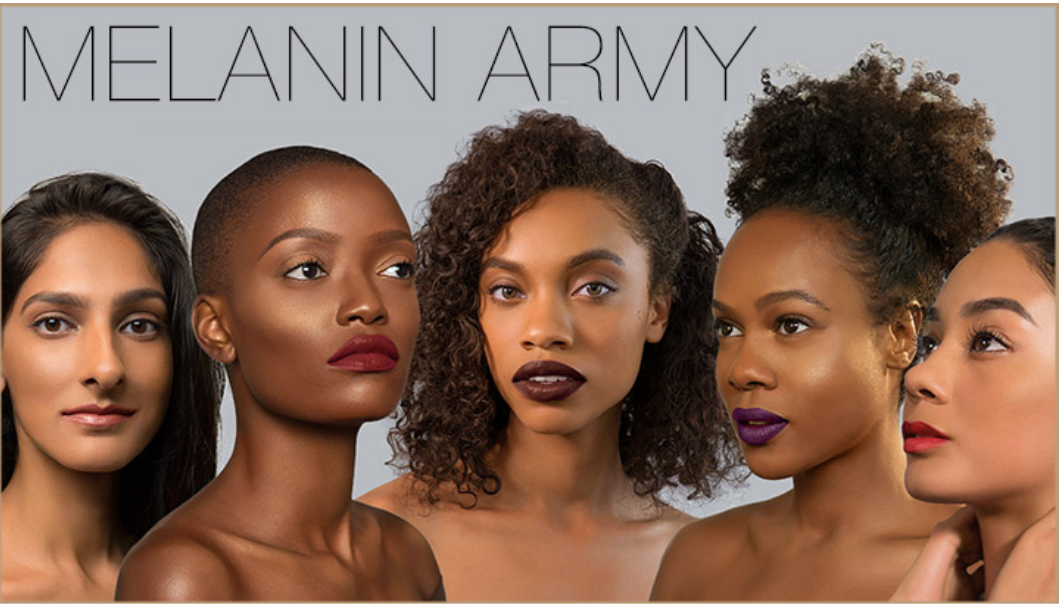Is Fenty Beauty Revolutionary Or Is The Beauty Industry Just Having A Moment?
/In my 30 years in the #Beauty business, there has been one recurring theme that always circles back around every decade or so. It’s the question of: What is the cosmetic industry’s relationship to the consumers they define as “Ethnic,” “Women of Color” or now #Multicultural? While this consumer's demographic description has changed, it’s questionable whether the conversations about her and the range of options available for her has changed as well.
So, let’s shed some light on the darker side of the beauty industry. I have spent the last 23 years of my career at #IMANCosmetics for the past 15 years as GM/EVP Brand Development. I am one of the few women of color who has not only a personal but a professional understanding of who this customer is and how she has felt about the business of beauty.
A History Of Diversity In The Beauty Industry
Up until the late 70s, diverse women were virtually nonexistent to the mainstream beauty industry. By the late 70s to early 80s, they were recognized by the “Black Brands” that launched lines to serve their needs exclusively. In the late 80s to early 90s, general market ventured into the uncharted territory of darker shade extensions and “ethnic” variations of their mainstream brands. But by the mid-nineties, there were still gaps in consumer satisfaction that made the industry ripe for reinvention.
In came #IMANCosmetics to upset the industry in the mid-90s by introducing #multiculturalism within the industry. The brand became a beauty business disruptor, with diverse campaigns that promoted skin tone instead of race. It became an instant word-of-mouth success by using public relations instead of traditional “ethnic advertising” vehicles. After a successful launch, the brand remained an industry leader with little competition for 20+ years.
How #FentyBeauty Created The Latest Beauty Moment
Then came the launch of #FENTYBeauty in Fall 2017. Rihanna’s cosmetics collection under the LVMH/Kendo Brand group reignited the conversation about the viability of the multicultural beauty market. The brand was positioned as the makeup savior that women of color had been waiting for. Competitive brands “snapped back” with messaging that reminded audiences that they, too, manufactured shades in diverse ranges. But something in the Fenty messaging led to Rihanna gaining a prominent voice for this audience.
Why Fenty Beauty? Why now? The answer to that question is what has driven almost all consumer brands over the last decade or so: social media and the power of analytical data. It can no longer be misconstrued that multicultural women don’t wear makeup or don’t spend significant money on beauty products. According to #Nielsen, women of color spend more than $65 billion each year and influence upward of $1 trillion in total consumer spending. The key, however, is not just to know the size of a market, but also to understand how to effectively reach its consumer base.
So, what exactly set the stage for the multicultural beauty conversation to be reignited? Fenty Beauty, like IMAN Cosmetics two decades before it, utilized the hottest media vehicle (rather than old outdated branding strategies) to understand the needs of the consumer and to get their message across to her.
IMAN Cosmetics tapped into the consumers’ desire to be inclusive. IMAN's PR efforts spread a message of global beauty and contemporary style and didn’t fall into stereotypical ideas of “ethnic” imagery and language. There were no “Get Down Brown” shades in the IMAN line! Everything from photography to packaging communicated luxury without cultural bias.
Fast forward to Fenty Beauty, we see the power of today’s technology putting a new perspective on a similar conversation. By 2016, there were actually more product offerings available for multicultural women than ever before, but the Fenty Beauty story remixed the narrative of shade unavailability, giving the brand a perceived position of necessity.
The brand had such a strong social media buzz among women of color that their retail partner, #Sephora, sold out of their darker shades within a few days or less. This situation may have simply been due to underestimated inventory planning, but it worked in the brand’s favor by reinforcing the idea that women of color were so starved for darker shades that Fenty Beauty couldn’t keep up with their demand. The “shade scarcity” strategy, whether intended or stumbled-upon, became a marketing coup.
The power of perception in the social media info-sphere is so important that the brand was described by many reputable media outlets as “earning $72 million in one month."
In actuality, #FentyBeauty garnered this amount in EMV (Earned Media Value), which is a measurement of social influence based on estimated exposure and public recognition. It’s significant to marketers, but it’s not a measurement of actual sales volume.
So, the question then becomes, has Fenty Beauty (or any of its competitors offering a wider selection of shades) actually changed the landscape of the beauty industry? Or is this growth more about perception than reality?
How to Engage the Multicultural Consumer
The answer lies within the industry itself. While Fenty Beauty is a step in the right direction toward multicultural customer satisfaction, my belief is that it takes more than social media buzz to change the business of Beauty. It’s great to “break the internet,” but we all know that hashtags are short-lived!
What, then, constitutes success for women of color in an industry where their dollars are worth billions to manufacturers? Representation!
Representation!
What, then, constitutes success for women of color in an industry where their dollars are worth billions to manufacturers? Representation! I believe that true progress comes about when multicultural women and men are represented as decision makers inside the major brands that profit from multicultural consumer dollars. We’ve seen many spokespeople become the public faces of multicultural-focused brands; however, there is a big difference between engagement and involvement.
By only engaging the multicultural consumer from the outside and not involving her from the inside out (where her insights can be part of the business ecosystem), it remains questionable how much progress is likely to be made. Without fully integrative multicultural inclusion, brands are bound to continue lagging behind in their ability to effectively define the future needs of a growing consumer group—one that, according to Nielsen, will represent 50% of the US population by 2060.
A perfect example of this lag is in the natural hair care business. Because the general market was culturally unplugged from the rapidly growing shifts in the multicultural haircare segment, they missed out on lucrative opportunities in the natural hair care movement. They are now just playing catch-up to the revenue generated by start-ups created by women of color such as #MissJessie's, #TaliahWaajid, and #CarolsDaughter. Internal diversity and inclusion are critical in companies gaining the insight and sensitivity to meet the true demands of multicultural markets.
Beyond Product Availability Product Accessibility
Last but not least is the important discussion of access. No matter how diverse an industry’s product offerings, space, location, and availability are imperative to a market's growth. Some retailers still operate with the outdated belief that only one or two brands are necessary to satisfy this customer. In many cases, they over-index on brands that carry a limited number of shades and formulas to address the needs of this diverse consumer base. This occurs even in areas where the customer traffic indexes highly multicultural. So, retailers share the responsibility with brands for whether or not meaningful inroads are made in multicultural marketing.
Social media analytics and demographic stats don’t lie. The opportunity exists for both brands and retail outlets to not only make a periodic nod in the direction of multicultural audiences, but also to invest in understanding and satisfying their needs.
The viral phenomenon of brands like Fenty Beauty and the staying power of brands such as IMAN Cosmetics prove that the buying power and influence of multicultural consumers is undeniable. Still, one question remains: will we be revisiting this cyclical topic again in 2027? Or will the voice of this diverse and growing consumer finally be fully understood and successfully represented across all aspects of the beauty business, as she deserves?
Let’s Connect!
Twitter: @DesireeR29 | Linkedin: @DesireeReid | Instagram:@DesireeR29 | Medium @DesireeReid29






